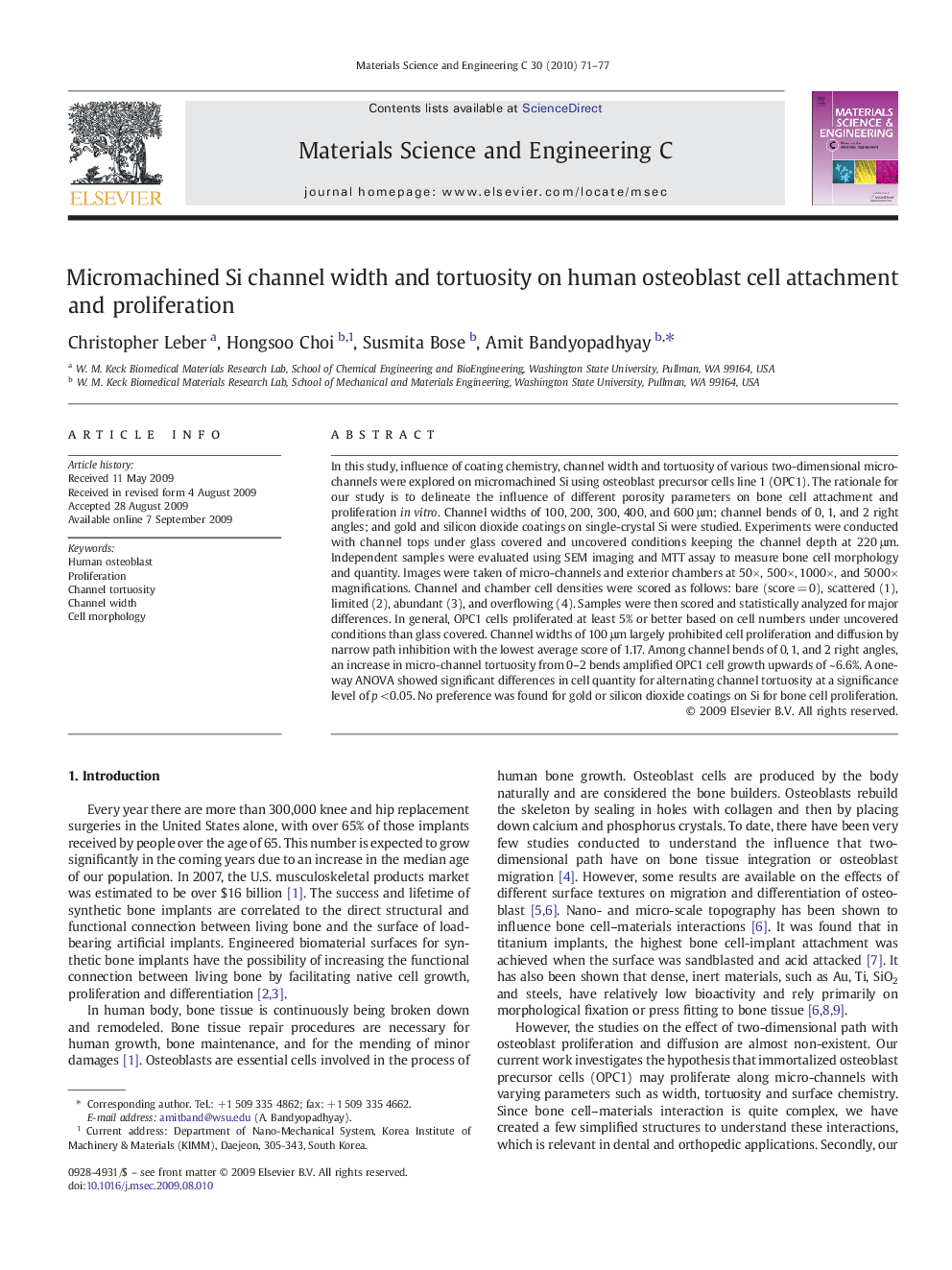| Article ID | Journal | Published Year | Pages | File Type |
|---|---|---|---|---|
| 1430094 | Materials Science and Engineering: C | 2010 | 7 Pages |
In this study, influence of coating chemistry, channel width and tortuosity of various two-dimensional micro-channels were explored on micromachined Si using osteoblast precursor cells line 1 (OPC1). The rationale for our study is to delineate the influence of different porosity parameters on bone cell attachment and proliferation in vitro. Channel widths of 100, 200, 300, 400, and 600 μm; channel bends of 0, 1, and 2 right angles; and gold and silicon dioxide coatings on single-crystal Si were studied. Experiments were conducted with channel tops under glass covered and uncovered conditions keeping the channel depth at 220 μm. Independent samples were evaluated using SEM imaging and MTT assay to measure bone cell morphology and quantity. Images were taken of micro-channels and exterior chambers at 50×, 500×, 1000×, and 5000× magnifications. Channel and chamber cell densities were scored as follows: bare (score = 0), scattered (1), limited (2), abundant (3), and overflowing (4). Samples were then scored and statistically analyzed for major differences. In general, OPC1 cells proliferated at least 5% or better based on cell numbers under uncovered conditions than glass covered. Channel widths of 100 μm largely prohibited cell proliferation and diffusion by narrow path inhibition with the lowest average score of 1.17. Among channel bends of 0, 1, and 2 right angles, an increase in micro-channel tortuosity from 0–2 bends amplified OPC1 cell growth upwards of ~ 6.6%. A one-way ANOVA showed significant differences in cell quantity for alternating channel tortuosity at a significance level of p < 0.05. No preference was found for gold or silicon dioxide coatings on Si for bone cell proliferation.
